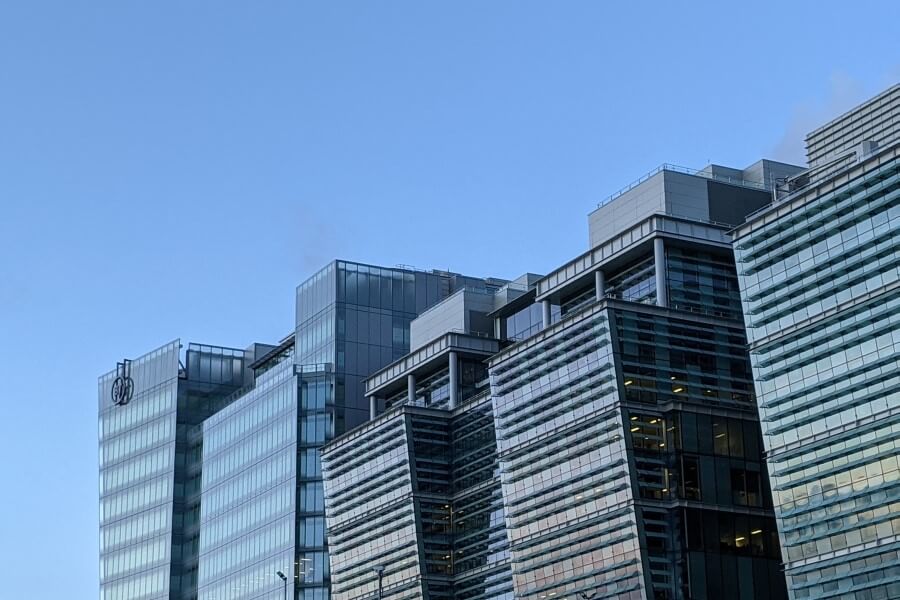Professor Simon Collison discusses how city-regions need to build a straightforward narrative that captures why people and businesses would want to visit, live, work, invest and commit to that particular place.
Place branding and local leadership is often focused on promoting inward investment around clusters of economic activity, which can contribute to regional economic growth and improve the long-term prospects for city regions.
As part of the CBI’s series of ‘Thriving Regions’ events, the ‘Clusters Think In’ podcasts focused on clusters, and place branding and leadership were common areas of discussion.
Many visitors who came to watch the Commonwealth Games this summer will have had their preconceptions of Birmingham transformed by this experience. The reputation, identity, and ‘brand’ of the city as a place to visit, learn, live, and work, were boosted by this one-off event.
Far from being cosmetic or superficial, place branding can make a real and measurable impact on investment, employment, and the well-being of city regions. Changing the perceived attractiveness of a place can lead to increased visitor footfall, more events, and local spending, with immediate multiplier effects on incomes and employment. A longer-term increase in inward investment, with greater attraction and retention of talent and skills, can transform local prosperity. This in turn can create a virtuous cycle with wider investment in transport and urban infrastructure alongside amenities, parks, leisure facilities, schools, cultural and creative industries, and the arts, all underpinning quality of life as a major location advantage. The outcomes go beyond the economic benefits, including social and community enrichment and growth in civic pride.
Evaluating how much a place brand contributes to this overall growth effect is very difficult. Longitudinal data analysis and surveys can help correlate economic performance outcomes (visitor income, inward investment, Gross Value Added (GVA), employment, household income, etc.) with a range of inputs, but isolating brand and reputation from a very large number of other factors are complex.
Clusters: Place Branding for Targeting Inward Investment
Some city regions are known/as specific industry clusters, or agglomeration economies, and others see this as an approach for creating, identifying, developing, or promoting the current or potential future distinctiveness of a local economy. Michael Porter defined these a long time ago as “geographic concentrations of interconnected companies and institutions in a particular field”. Notably, despite talk of the ‘death of distance’, there are still benefits to physical proximity for firms which can stem from economies of scale, reduced costs, and access to particular endowment factors which underpin shared competitive advantages (such as skilled labour, transport infrastructure, university-based R&D, etc.).
From the Rhine-Ruhr and Silicon valleys, Hollywood, and Detroit, to Mumbai Bollywood, Tel Aviv’s ‘Silicon Wadi’, and Shenzhen’s ICT cluster, smart specialization has helped many city-regions grow, for extended periods in some cases.
It is important to understand that the identity of a place as a distinctive economic cluster often emerges, as opposed to being pre-planned. Stories and brands that persist, build up over time to create an enduring reputation. But these narratives can be both inputs and outputs of cluster formation. As momentum grows around a specific area of specialization this can crystallize the narrative and help create the identity. This also presents an opportunity for local (and national) governments to provide post-hoc rationalisations showcasing their own contribution to this success.
In some cases, city regions have evolved well beyond widely held, but out-of-date views about their distinctive economic strengths. 30 per cent of the West Midlands economy is generated by business professional financial services (BPFS) with high levels of investment from global multinationals like HSBC, PwC, and Goldman Sachs. Despite this fact, the region is branded as a leading automotive manufacturing cluster (and it is, see below) which accounts for a much smaller proportion of jobs and GVA.
Above all, a strong and coherent consensus about which identity to promote is critical to having a positive impact on visitors and investors. A lack of local consensus producing mixed messages and multiple storylines highlighting a confusing variety of different attractions and features of a place has a damaging effect on identity formation.
Strong Place Leadership
Strong leadership is needed to build and maintain a local consensus on a single, straightforward narrative that captures why people and businesses would want to visit, live, work, invest and commit to a particular place. As in other areas of life, a consistent, unifying story can change mindsets and embedded beliefs, in this case providing a home with a clear and positive identity.
Strong leadership is also needed to drive forward new narratives around future potential areas of growth, as opposed to past glories. The automotive industry in the West Midlands provides an important illustration. The region is well-known for its long tradition of automotive R&D, design, and manufacturing, and has the highest concentration of such firms in the country, with a ‘location quotient’ of over 4.5 (over 1 indicates more than the average concentration). The industry is directly worth just over £8 billion to the regional economy, and the components supply chain adds another £3.2 billion. The benefits of hosting these firms, in terms of investments and jobs and strong multiplier effects on local service businesses (cinemas, retailing, restaurants, etc.) are evident.
This is far from a dying legacy, but an exclusive reputation for advanced automotive manufacturing can become a constraint as a region tries to adapt to new economic opportunities. The West Midlands region needs to leverage these well-known innovation assets, and its strong manufacturing reputation, to create new clusters for the future. There is already growing momentum behind ‘clean tech’ and ‘med tech’ clusters, covering a wide variety of technologies, processes, and practices, products, services, or solutions that are energy efficient and environmentally friendly, or used to save and improve people’s lives.
The sheer scale of the regional economy and some of the innate competitive advantages underpin the potential for these new areas of growth. Again, branding is important. Where latent advantages exist, promoting these as part of a renewal process through a unifying narrative can be a powerful tool.
This blog was written by Professor Simon Collinson, City-REDI / WMREDI, University of Birmingham.
To sign up for our blog mailing list, please click here.
Disclaimer:
The views expressed in this analysis post are those of the authors and not necessarily those of City-REDI / WM REDI or the University of Birmingham




